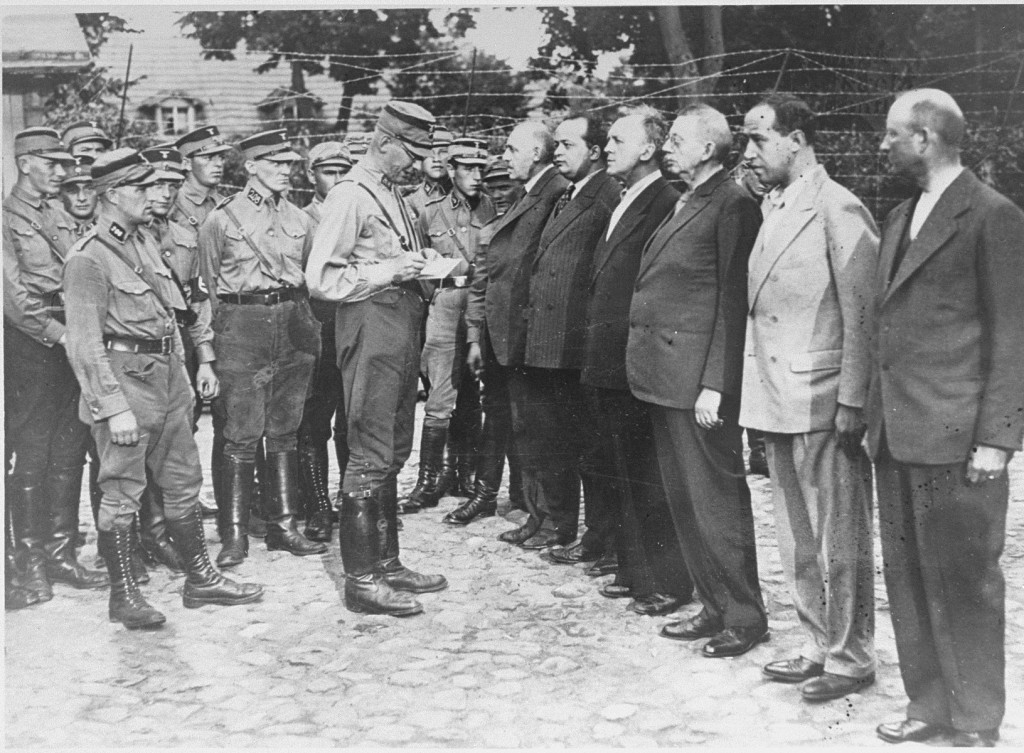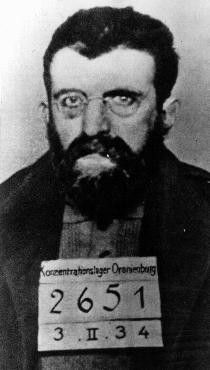
Nazi Political Violence in 1933
Following Adolf Hitler's appointment as German chancellor on January 30, 1933, the Nazi Party’s paramilitary organizations, the SA and the SS, unleashed waves of violence against political opponents and Jews.
The Nazi use of force to intimidate, injure, or even kill foes was not new. It dated back to the early days of the Nazi Party. In the final years of the Weimar Republic this violence increased. In Prussia, Germany’s largest state, at least 105 people were killed in clashes between the Nazis and their Leftist political rivals in June and July of 1932, when the Reichstag elections campaigns were in full swing. Hundreds of others were injured.
After January 30, 1933, Hitler’s coalition government acted to effectively give Nazi paramilitary units control of the German streets. The SA, which had dramatically increased in size with Nazi electoral success, numbering some 3 million members by mid-1934, disrupted or shut down Leftist assemblies and protests, often with police support. In mid-February, Hermann Göring, the newly named Prussian Minister of the Interior, ordered the police not to hinder SA and SS actions, but to help them. Shortly thereafter, he created an auxiliary police force out of these two Nazi orders. As a result, their violent actions were given state sanction.

Within days of the Reichstag Fire, and the resulting presidential decree for the Protection of the People and State (February 28), the SA and SS escalated the violence against Nazi political opponents. Thousands of Communists and Social Democrats were arrested and jailed. In March—April 1933, an estimated 40,000 to 50,000 political foes were taken into “protective custody” (Schutzhaft) and imprisoned in concentration camps. The SA and SS routinely beat up and tortured political opponents and vandalized, looted, or destroyed leftist parties’ offices. Sometimes, individuals were murdered.
Not even individuals holding political office at the local or national level were safe from such violence. Some 500 municipal administrators and 70 mayors were forcibly removed from their positions by the end of May 1933. By the end of spring the violence had spread to non-leftist political figures. On June 26, Heinrich Himmler, the head of Bavaria’s political police and the head of the Nazi SS, ordered his forces to place all Reichstag and state assembly representatives from the Bavarian People’s Party in “protective custody.”
On July 14, 1933, Hitler’s government passed a law prohibiting all other political parties, except the Nazi Party, and banning the formation of new political parties. By this stage all of Germany’s many parties had either been closed down or ordered to dissolve themselves.
Critical Thinking Questions
- What pressures and motivations might have affected people in Germany as they faced the rise of political violence? Are these factors specific to that time period or are they universal?
- How can knowledge of the events in Germany and Europe before the Nazis came to power help citizens today respond to threats of genocide and mass atrocity in the world?

